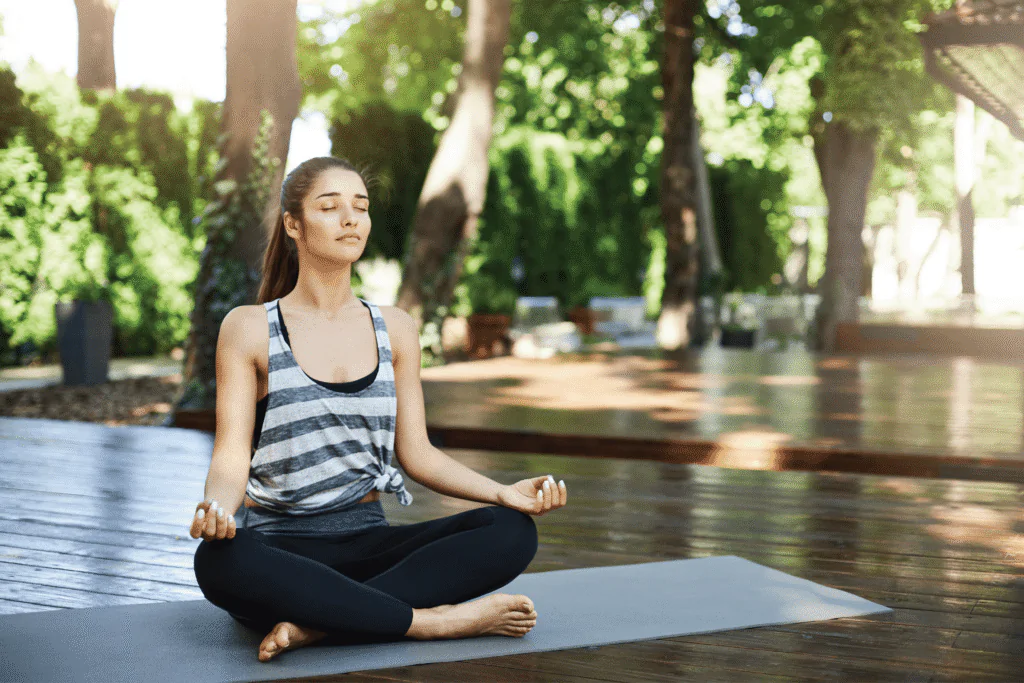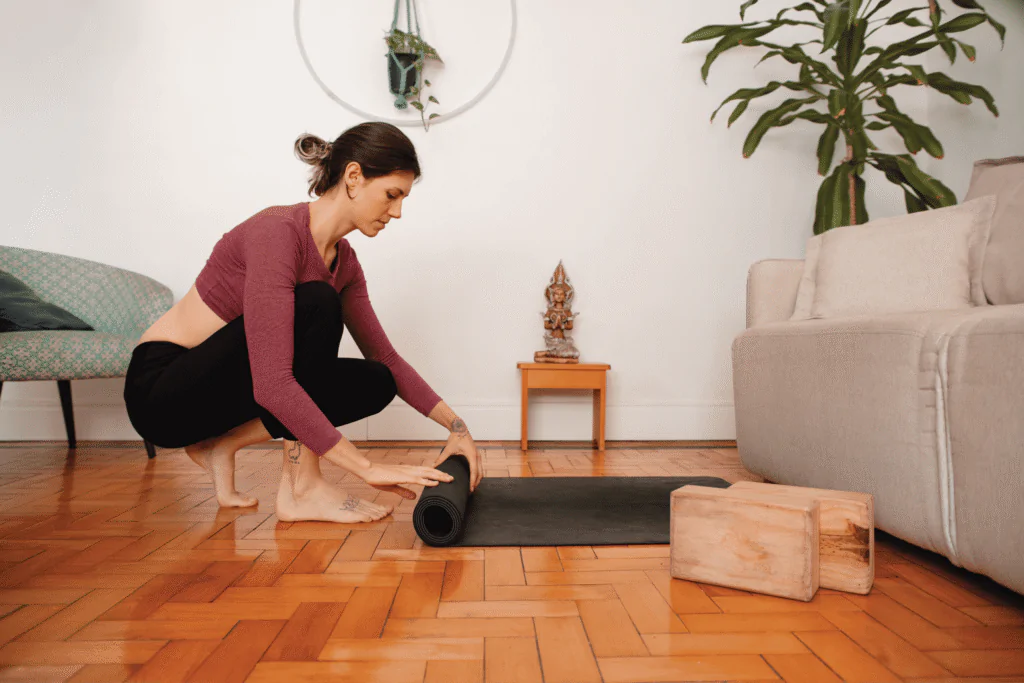What is the Burmese Meditation Position?
The Burmese meditation position is one of the most natural and beginner-friendly ways to sit for meditation. Instead of forcing your legs into Half Lotus or Full Lotus, here you simply rest both feet on the floor in front of your body, one slightly in front of the other. Your knees naturally drop outward, your feet stay grounded, and your body feels open and relaxed.
It’s a pose that many beginners start with because it avoids the strain on hips, knees, and ankles that more advanced meditation positions can create. The only real challenge? Keeping your spine straight and tall without letting yourself slump forward.
How to Perform the Burmese Pose?
- Sit down on a mat or cushion, making sure your hips are slightly elevated.
- Fold your legs gently, placing both feet flat on the floor in front of you. Let one heel rest closer to your body and the other slightly forward.
- Allow your knees to fall outward naturally.
- Keep your back upright, chest open, and shoulders relaxed.
- Rest your hands on your knees or in your lap.
- Close your eyes and focus on your breathing, staying aware of your body posture.

What are the Mental and Physical Benefits of the Burmese Pose?
- Comfort without strain: A stable posture that avoids the knee and ankle pressure of Lotus.
- Openness and balance: The uncrossed legs create a sense of grounding and calm.
- Better blood circulation: No blocked blood flow to the legs, so less numbness.
- Supports longer meditation sessions: You can sit comfortably for extended periods if your spine stays upright.
What are the Variations of the Burmese Pose?
Cushioned Burmese Pose
Use a meditation cushion or folded blanket under your hips to help tilt your pelvis forward. This makes it much easier to keep the spine upright.

Knee-Supported Burmese Pose
If your knees hover above the ground, place small cushions or yoga blocks beneath them. This removes tension and makes the pose more sustainable.

Chair-Based Burmese Style
For those who cannot sit on the floor, replicate the openness of Burmese by sitting on a chair with feet flat on the ground and knees slightly apart.

What are the Preparative Poses of the Burmese Pose?
To make sitting easier, you can warm up with a few gentle stretches:
- Seated Forward Fold (Paschimottanasana): Stretches hamstrings and lengthens the spine.
- Butterfly Pose (Baddha Konasana): Opens the hips and makes sitting more comfortable.
- Cat-Cow Stretch: Prepares the back and shoulders for an upright posture.
What is the Burmese Pose Precaution?
While this pose is gentle, there are a few things to watch out for:
- Don’t slouch — a rounded back can cause long-term strain.
- If your legs start tingling, gently stretch them out before returning to the pose.
- Always elevate your hips slightly above your knees to keep your lower back safe.
Finding the Best Meditation Pose for You
Every meditation pose has its unique flavour. Burmese is ideal if you’re just starting out, or if you want comfort without forcing your body into complex leg positions. But remember — the best meditation position is the one you can maintain without distraction. If your body feels at ease, your mind can go deeper into stillness. So, try Burmese alongside other poses, notice how your body responds, and choose the one that makes meditation feel natural.

Conclusion
The Burmese meditation position proves that meditation doesn’t need to be complicated. By simply letting your legs rest naturally on the floor and keeping your back upright, you can create a stable and relaxed foundation for your practice. It’s gentle, beginner-friendly, and allows you to sit comfortably for longer periods without the aches that come with more advanced poses. If Lotus feels overwhelming, Burmese might be the simple solution your body has been asking for.

